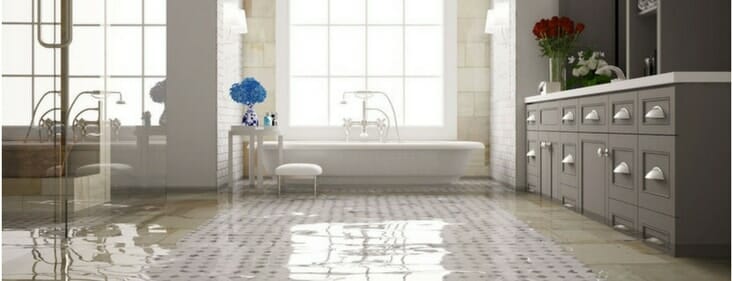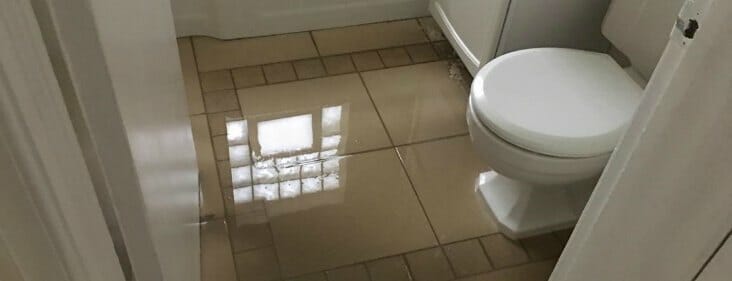What Triggers Water Deterioration in the Bathroom
What Triggers Water Deterioration in the Bathroom
Blog Article
Just about every person seems to have his or her own opinion involving How to Repair and Prevent Bathroom Water Damage?.

Water damage usually occurs in the shower room due to the water utilized day-to-day. Occasionally, the damages could be a little mold from the shower. Other times, it's enormous damages on your floor. Whatever it is, it is always excellent to understand the reason as well as prevent it prior to it happens.
This overview will experience some of the typical root causes of water damage in the bathroom. We will certainly additionally examine what you can do to avoid these reasons from damaging your restroom. Let's dive in.
These are the usual factors you would certainly have water damage in your restrooms and also how you can spot them:
Excess Moisture
It's cool to have that long shower and also dash water while you hem and haw and act like you're executing, yet occasionally these acts can create water damage to your bathroom.
Spraying water around can create water to head to edges and also create mold and mildews. View how you spread excess dampness around, as well as when you do it, clean it up to avoid damage.
Splits in your wall floor tiles
Shower room wall surface ceramic tiles have actually been specifically designed for that function. They protect the wall surface from moisture from individuals taking showers. However, they are not unbreakable.
Occasionally, your restroom wall surface floor tiles crack as well as permit some moisture to leak right into the wall surface. This could potentially ruin the wall surface if you do not take any kind of action. If you discover a split on your wall tiles, fix it quickly. Do not wait till it damages your wall surface.
Overruning toilets and sinks
As human beings, in some cases we make errors that could create some water damage in the restroom. For instance, leaving your sink faucet on might trigger overflowing and damage to other parts of the shower room with dampness.
Likewise, a malfunctioning bathroom might trigger overflowing. As an example, a broken bathroom manage or other parts of the cistern. When this happens, it can harm the flooring.
As soon as you see an overruning sink or bathroom, call a plumbing professional to assist deal with it instantly.
Ruptured or Leaking Pipelines
There are numerous pipelines bring water to various parts of your shower room. Some pipelines take water to the commode, the sink, the taps, the shower, and lots of other areas. They crisscross the small location of the bathroom.
Once in a while, these pipelines could get rusty as well as ruptured. Various other times, human action might create them to leakage. When this happens, you'll discover water in the edges of your restroom or on the wall.
To identify this, look out for bubbling wall surfaces, mold and mildews, or mildew. Call an expert emergency situation plumber to fix this when it occurs.
Roofing Leakages
Occasionally, the issue of water damage to the shower room may not come from the bathroom. For example, a roofing system leak can trigger damage to the bathroom ceiling. You can detect the damage done by checking out the water stains on the ceiling.
If you discover water stains on your ceiling, inspect the roofing to see if it's damaged. After that, call a professional to assist solve the concern.
Conclusion
Water damage to your washroom can be annoying. Nevertheless, you can handle it if you stop several of the causes pointed out in this overview. Call a professional emergency situation plumber if you discover any kind of extreme damage.
How to Prevent Water Damage in Your Bathroom?
Water damage repair is an expensive, meticulous, and lengthy process. Unfortunately, bathrooms are the most susceptible rooms to water damage due to toilets, showers, and sinks. Pipes and fixtures wear out over time and are not immune to damage. But all is not lost, as there are ways to prevent water damage from occurring in your bathroom.
Check Your Plumbing
Nothing lasts forever, especially pipes, which can rust and begin leaking over time. You should periodically conduct pipe inspections and pay attention for any musty smells or water stains that may indicate you need water damage repair. Here are some things to check:
Frequently test valves for your toilet, shower, and sink to ensure they are properly working. Check faucet supply lines hidden under vanities and replace when needed. Replace cracked or deteriorating caulking along sinks, tubs, and showers. If you notice a clog in your sink, call in a professional. Since you can’t check the pipes in the wall, keep an eye out for stains, drywall bubbling, musty smells, and excess moisture; if the bathroom is on a second level, check the ceiling of the room directly below for these signs. Don’t Overwork Your Toilet
One of the most common reasons bathrooms need water damage repair is due to overflowing toilets. Save yourself the hassle of cleanup by being mindful and not pushing your toilet to extreme limits. If you have young children, it is especially important to keep an eye on them when they are in the bathroom and to teach them how to avoid clogging the toilet. Here are some more tips to help prevent your toilet from overflowing:
If you have a septic tank, only use septic-safe toilet paper Do not flush anything down the toilet besides toilet paper; items like diapers and sanitary napkins will clog the piping Pay attention to your toilet’s water level: If it’s low, it could mean it is partially clogged or that there is a crack in the toilet bowl https://www.alure.com/home-improvements-blog/resources/how-to-prevent-water-damage-in-your-bathroom

Hopefully you liked our section about How to Repair and Prevent Bathroom Water Damage?. Thanks so much for taking a few minutes to read our article. Sharing is nice. You never know, you may just be helping someone out. Thanks a lot for your time invested reading it.
24/7 service, call! Report this page